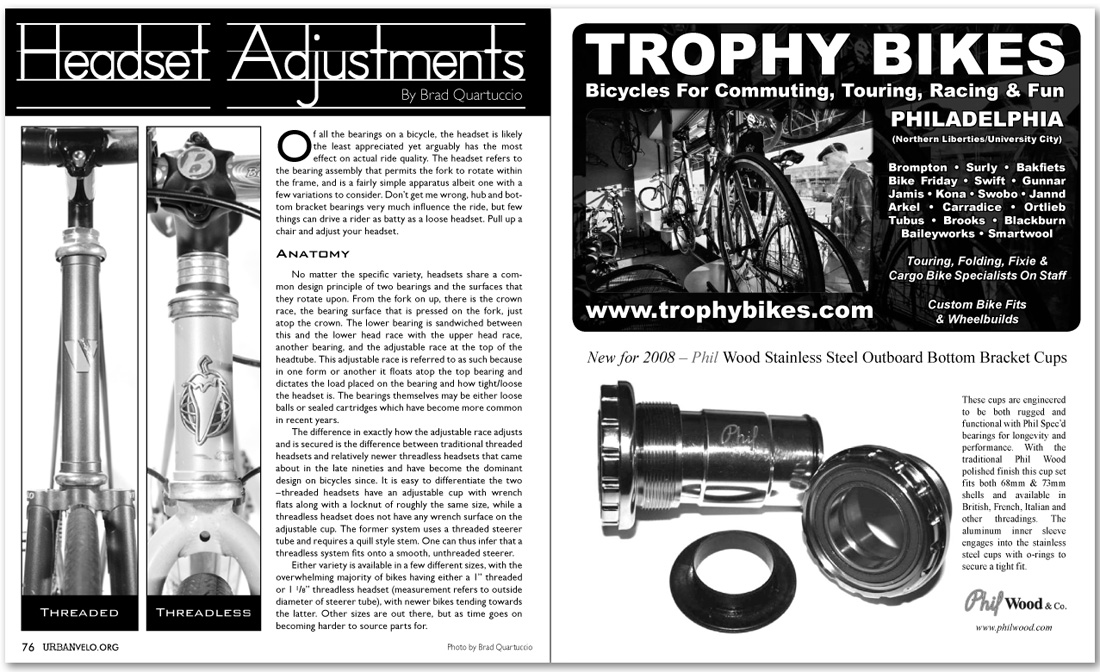By Brad Quartuccio


|
|||
Headset AdjustmentsBy Brad Quartuccio Of all the bearings on a bicycle, the headset is likely the least appreciated yet arguably has the most effect on actual ride quality. The headset refers to the bearing assembly that permits the fork to rotate within the frame, and is a fairly simple apparatus albeit one with a few variations to consider. Don’t get me wrong, hub and bottom bracket bearings very much influence the ride, but few things can drive a rider as batty as a loose headset. Pull up a chair and adjust your headset. Anatomy The difference in exactly how the adjustable race adjusts and is secured is the difference between traditional threaded headsets and relatively newer threadless headsets that came about in the late nineties and have become the dominant design on bicycles since. It is easy to differentiate the two –threaded headsets have an adjustable cup with wrench flats along with a locknut of roughly the same size, while a threadless headset does not have any wrench surface on the adjustable cup. The former system uses a threaded steerer tube and requires a quill style stem. One can thus infer that a threadless system fits onto a smooth, unthreaded steerer. Either variety is available in a few different sizes, with the overwhelming majority of bikes having either a 1” threaded or 1 1/8” threadless headset (measurement refers to outside diameter of steerer tube), with newer bikes tending towards the latter. Other sizes are out there, but as time goes on becoming harder to source parts for. (continued)
|
|
|